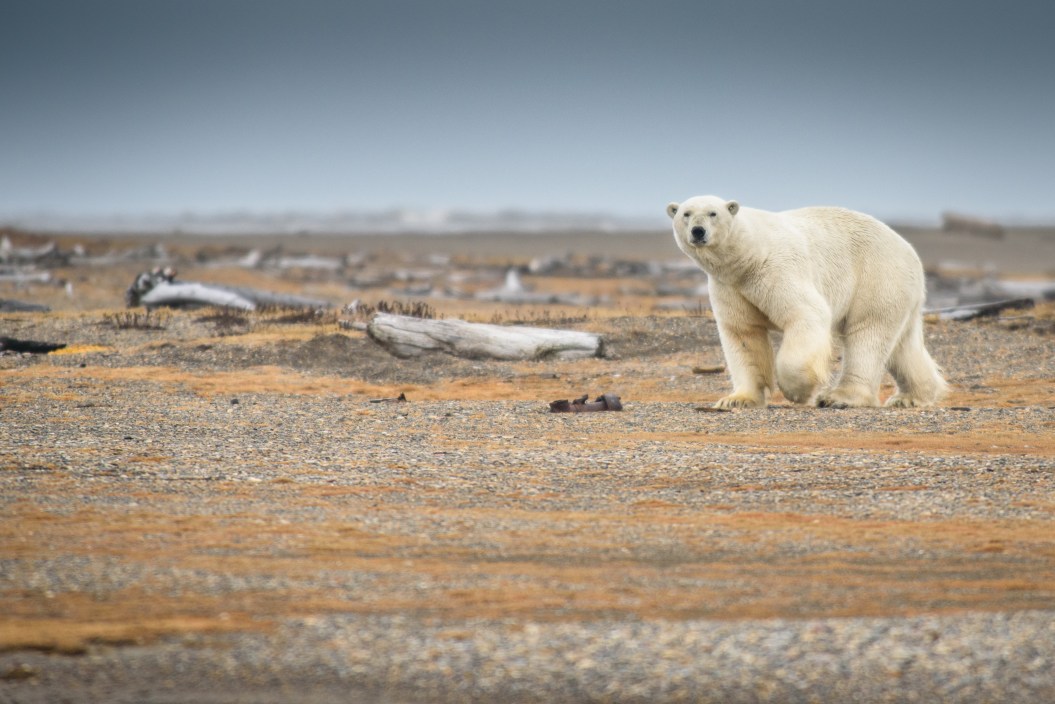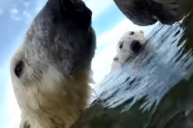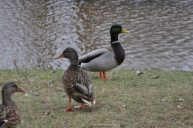A polar bear was found dead in October near Utqiagvik, Alaska, and the Alaska Department of Environmental Conservation has confirmed that the cause of death was avian influenza. The agency made the finding last month after sampling and studying the body tissue of the polar bear, found near one of the northernmost towns in the U.S., on the Arctic Ocean.
The death comes two years after the latest strain of avian influenza, the highly contagious H5N1, was detected in North America. However, as Alaska's state veterinarian, Dr. Bob Gerlach, told the Alaska Beacon, "This is the first polar bear case [of avian influenza] reported, for anywhere."
Avian influenza, also known as bird flu, is a virus that spreads naturally among wild aquatic birds and can also infect domestic poultry and other wild bird and animal species. In Alaska, three foxes, a black bear, a brown bear and, now, a polar bear, are known to have died from avian influenza.
The virus is found in birds' intestines and respiratory tracts. While many wild birds can carry the virus without appearing sick, in poultry—such as chickens and turkeys—it causes symptoms such as low energy and appetite, swelling in various body parts, nasal discharge, and lack of coordination.
Incredibly contagious among birds, the avian influenza virus is spread through feces, saliva, and nasal discharge. It can also jump into other, non-bird species when an animal eats an infected bird.
A polar bear's typical diet consists of seals that they hunt for on sea ice. But with sea ice disappearing due to climate change, the bears have had to turn to other food sources. Gerlach believes that this polar bear was likely scavenging the carcasses of sea birds. Numerous birds on the North Slope of Alaska have been infected with avian influenza and could be transmitting the flu to the predators that rely on them for food.
Why Avian Flu Is Bad News for Polar Bears
This is especially bad news for polar bears. They are already struggling to adapt to the rapidly changing climate of the Arctic, which is warming four times faster than the rest of the world. The bears were given Endangered Species Act protections in 2008, and they are listed as "vulnerable" on the International Union for Conservation of Nature's red list of endangered species.
The disappearance of sea ice has not only made it more difficult for polar bears to hunt seals; they are also losing their breeding grounds. Hungry polar bears are being forced onto land, where they are increasingly coming into conflict with the locals, with fatal consequences for both bears and people. An in-depth study in 2020 showed that if current trends continue, nearly all polar bear populations will disappear by 2100.
It's a fate that could potentially be hastened if a mass outbreak of bird flu were to occur in polar bear populations. Gerlach told The Guardian that this particular Alaska polar bear may not be the only one that has died from avian influenza. He noted that polar bears tend to live in remote places, far from people, where their deaths may go unnoticed.
And, unfortunately, it appears that H5N1 is here to stay. Unlike previous outbreaks of avian influenza that fizzled out after a year or two, the current outbreak does not seem to be lessening anytime soon—and is spreading in areas that don't have any large poultry farms, such as northern Alaska. It has even reached as far as Antarctica, infecting several species of birds and mammals such as elephant seals, and threatening other vulnerable populations such as the emperor penguin.
READ MORE: New Report Shows Freshwater Fish Vulnerable to Extinction Events




